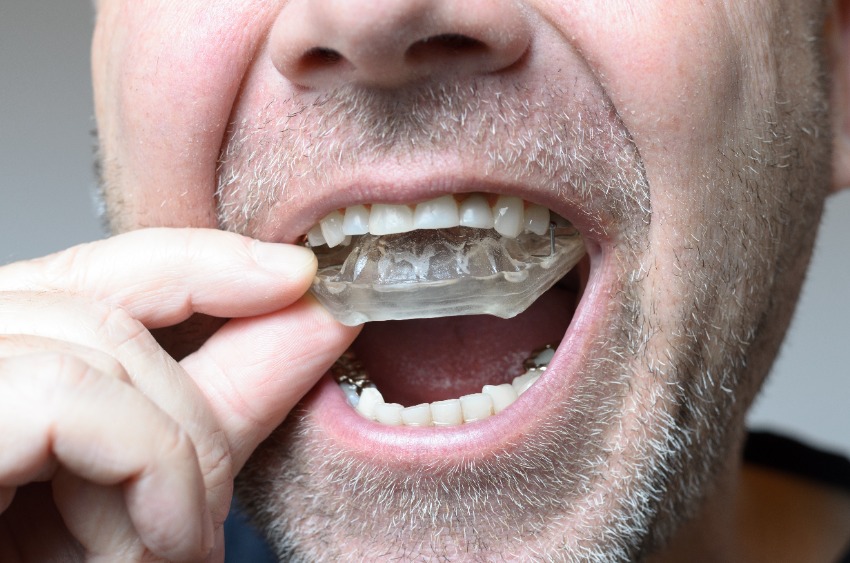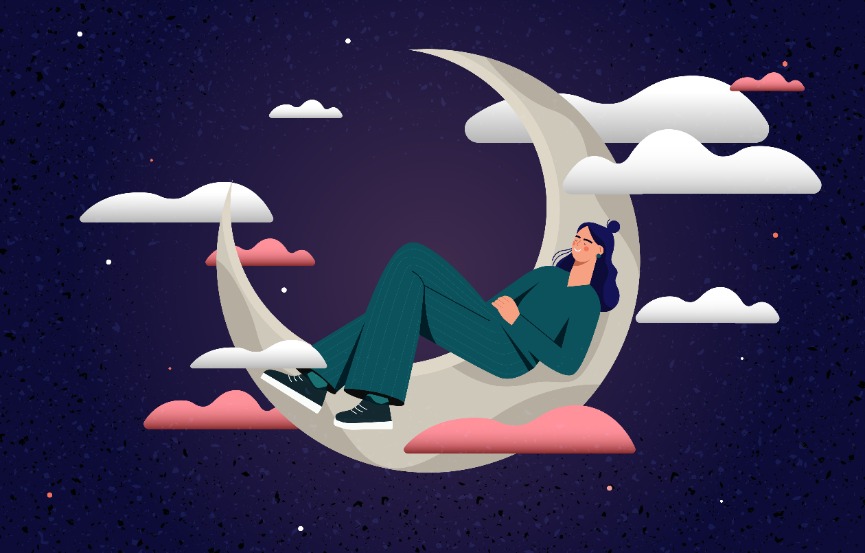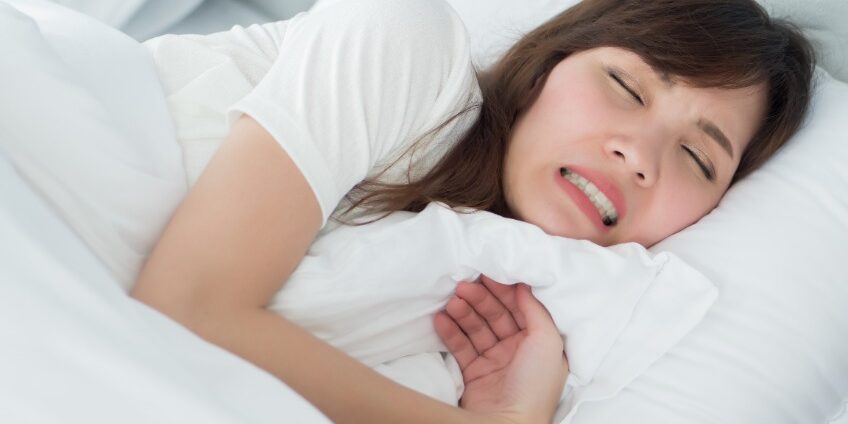Introduction
Sleep bruxism is defined as the grinding of teeth during sleep. Unfortunately, sleep bruxism is more difficult for an individual to detect since it occurs during sleep. It has greater prevalence in children, adolescents, and young adults than adults. Specific statistics regarding incidence are difficult to determine due to the individuals’ lack of awareness, especially in children. [i]
Symptoms and Diagnosis
The main symptom of sleep bruxism is involuntary clenching and grinding of the teeth during sleep. The movements resemble chewing but generally involve more force. Individuals have periodic episodes of clenching and grinding rather than a continual occurrence. Frequency is often episodic and inconsistent and may not occur every night. Some amount of mouth movement is normal during sleep. Up to 60% of people make occasional chewing-like motions known as rhythmic masticatory muscle activities (RMMA), but in people with sleep bruxism, these occur with greater frequency and force.[ii]
The majority of sleep bruxism occurs during the early phases of sleep, during stages 1 and 2 of non-REM sleep. A small percentage of episodes can arise during REM sleep. People who grind their teeth at night may never become cognizant of the disorder unless a bed partner identifies the grinding. But there are additional symptoms that occur including:
- jaw and neck pain from muscle tightening
- morning headaches similar to tension headaches
- unexplained damage to teeth[iii]
Treatment

Several approaches can decrease episodes and limit damage to the teeth and jaw. The most effective treatment for sleep bruxism varies based on the individual, but may include:[iv]
- Stress Reduction – generally this is best accomplished through counseling. Techniques for reframing negative thoughts through cognitive behavioral therapy for insomnia (CBT-I) can often help.
- Improving the quality and quantity of sleep may address stress and anxiety.
- Medications – Medications assist some individuals to reduce sleep bruxism.
- Botox injections may limit muscle movement and have proven effectiveness in more severe cases of sleep bruxism.
- Sleep aids may assist in the quality and quantity of sleep, which in turn, will decreace the incidence of bruxism.
- Mouthpieces – Night guards, are used to reduce damage to the teeth and mouth that can occur because of sleep bruxism.
- Dental splints – devices that provide a barrier against grinding These devices are specially designed by a dentist to accommodate specific patient armatures. They may also be available over-the-counter, but are generally less effective than those installed by dentists.
- Mandibular advancement devices (MAD) – a device that stabilizes the mouth and jaw in a specific position and prevent clenching and grinding. The device functions by holding the lower jaw forward.
- Avoiding gum and hard foods can decrease painful movements of the jaw.
- A hot compress or ice pack applied to the jaw may provide temporary pain relief.
- Facial exercises help some people reduce the pain in their jaw or neck.
- Facial relaxation and massage of the head and neck area may further reduce muscle tension.
- Physicians, dentists, physical therapists and/or massage therapists may recommend specific facial exercises to relieve pain.
Conclusion

Bruxism is a clinical condition that is often missed due to the patients lack of awareness of the problem Untreated, there may be long-term consequences of sleep bruxism. Teeth come painful, eroded, and mobile. Dental crowns, fillings, and implants can also become damaged. Teeth grinding can increase the risk of problems with the joint that connects the lower jaw to the skull, known as the temporomandibular joint (TMJ), which result in chewing difficulty, chronic jaw pain, jaw popping or clicking, locking of the jaw, and other complications. Not everyone with sleep bruxism will have serious effects, and the extent of symptoms and long-term consequences depend on the severity of the grinding7, and the alignment of a person’s teeth. Regardless of the severity, bruxism must be identified and treated to improve one’s general health and quality of life.
Free Webinar For additional information, one may consider attending the American Academy for Cardiovascular and Sleep Medicine’s FREE WEBINAR on November 22, 2022 at 7:30 p.m. It is free to the public. The presenter is Dr. Gilles Lavigne, DMD, PhD, FRCD, an internationally renowned clinician and researcher recognized for his experimental & clinical research on sleep bruxism and the interactions between sleep, pain, and breathing disorders. For additional information, and to register, access the AACSM at the following site:
FOOTNOTES:
[i] Sleep Foundation, “Sleep Bruxism.”, Retrieved on 11/9/22 from https://www.sleepfoundation.org/bruxism.
[ii] Yap, A. U., & Chua, A. P. (2016). Sleep bruxism: Current knowledge and contemporary management. Journal of conservative dentistry : JCD, 19(5), 383–389.https://doi.org/10.4103/0972-0707.190007
[iii] Manfredini D, Winocur E, Guarda-Nardini L, Paesani D, Lobbezoo F. Epidemiology of bruxism in adults: a systematic review of the literature. J Orofac Pain. 2013;27(2):99-110.https://doi.org/10.11607/jop.921
[iv] Hennessy, B. J. (2020, June). Merck Manual Consumer Version: Teeth Grinding (Bruxism). Retrieved August 18, 2020.https://www.msdmanuals.com/home/mouth-and-dental-disorders/symptoms-of-oral-and-dental-disorders/teeth-grinding Cheifetz AT, Osganian SK, Allred EN, Needleman HL. Prevalence of bruxism and associated correlates in children as reported by parents. J Dent Child (Chic). 2005;72(2):67-73.https://pubmed.ncbi.nlm.nih.gov/16294935/








